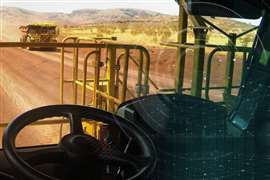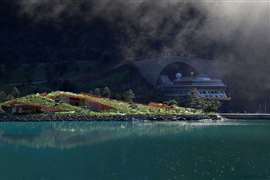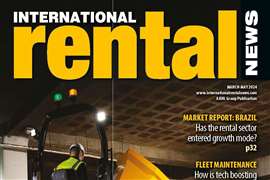Age matters
01 May 2008
Fleet size is a brute measure of a company's status. It doesn't reflect the value of a fleet (Is that 1000 big booms or 1000 personnel lifts?); it doesn't measure how much of the equipment is actually working; and it doesn't show equipment age.
So the fact is that 2005 total fleet sizes and apparently modest increases don't reflect what is going on under the surface. The biggest access owners-eight of the top ten companies are based in the US-may not have dramatically grown their pools of access equipment, but they have certainly been investing (Ask the manufacturers!) and age profiles have come down pretty dramatically. Utilisation has also gone up.
The estimates we had to make in the past few years for the size of some of the bigger US fleets makes it difficult to make meaningful comparisons with this year's more accurate data. However, industry analysts reckon that NES and Hertz both grew their aerial fleets by around 10% last year, while Sunbelt and NationsRent's numbers were steady over those 12 months. United, again the world's biggest access owner by a large margin, increased its fleet size by around 4%, and RSC's fleet size fell a little. (We should point out also that previous estimates of NationsRent's aerial fleet have been too small.) Las Vegas-based Ahern Rentals is probably the US company that has grown its fleet by the most in the past year.
In Europe, acquisitions have played a big part in any reported fleet growth, with companies, including Loxam, Lev and GAM, having increased fleet sizes by acquiring competitors. Others are simply investing a lot in new equipment, including UK firms Panther Platform Rentals and AFI and Umesa of Spain. Nordic players Ramirent, Rakentajain Konevuokraamo and Cramo have all grown their fleets dramatically over the past year.
Franchise organisations continue to make their presence felt. There are two in Germany-Ring Lift and System Lift-and one in the UK, Access Link. The figures for Access Link's fleet includes the 1050 platforms of member Panther Platforms, which is also listed as a stand-alone company.
Some firms supplied their information with opinions attached. Milcon in the Netherlands, for example, says its fleet size “is our real active rental fleet, exclusive of sales stock and international re-rental stock.” They are making a general point but are also probably referring directly to Netherlands rival Riwal Lift, although the latter reports that it has stripped out its Ri-Rent fleet from its data.
The massive US market hides some big regional players, and this year's newcomers include California High Reach, a Modesto-based company with one depot, and also Star Rentals, the big, independent rental player based in Seattle and a major player in the Pacific North West region. The company plays its cards close to its chest, but aerials form a big part of its activities-over 50%-and more than justify its place on the list.
One company that almost made the list is The Home Depot, whose fleet number of 1000 machines was agreed upon with the company on the basis that around half of its almost 1100 depots carry an average of two aerial platforms. With that number of locations, an extra machine per depot will make a big difference.
With the fleet renewal process well underway, next year may present a clearer picture of fleet growth. It will also likely show continued consolidation in the European access market. A brute measure it may be, but there is still something fascinating about fleet numbers: age matters, but size does too.






